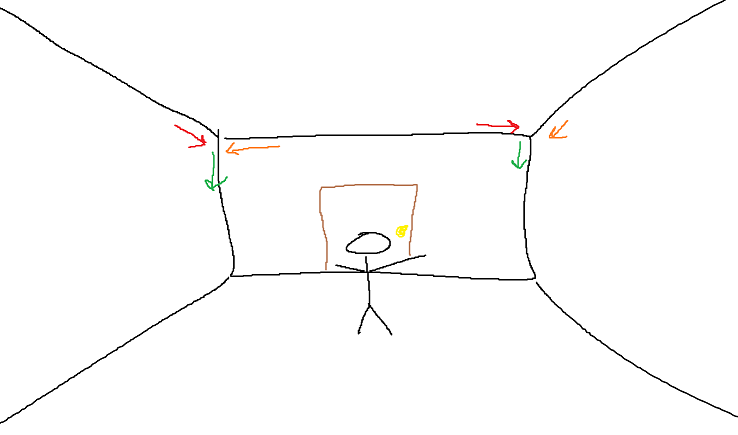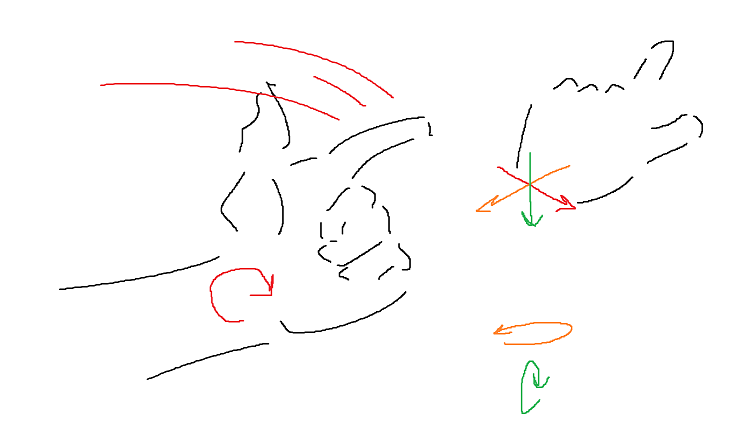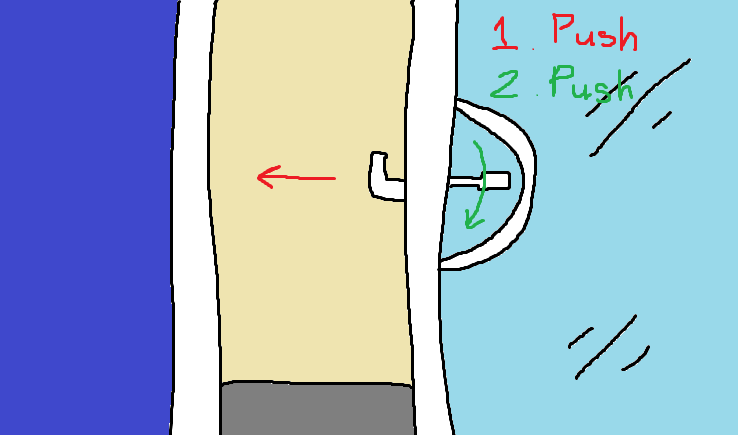

{ background info
This is a paragraph! Here's how you make a link: Neocities.
Here's how you can make bold and italic text.
Here's how you can add an image:


Here's how to make a list:
To learn more HTML/CSS, check out these tutorials!
}
I wanted to centralize information about my odd behaviour. I'm undiagnosed, but I'm claiming it, because this isn't normal enough to NOT be a mental illness LOL. Also, it is a detriment in my life overall, so it is only fair I receive compensation for it RUINING my life.
It's been pretty difficult to do most things in my life that requires Action and has Severity. If I have to disturb the state of an object, it will take at least 3x as long as the average person. Rarely do I share in the luxury of simply existing in my day-to-day activities.
The only two exceptions I am aware of is that I simply forget or I forego responsibility to another person.
The problem with Actions is that it is difficult to believe they are Executed, so I must try again. The total number of times I Perform an Action depends on my physical, mental, and emotional state. For example, ocassionally, my body feels like it is being stabbed by hundreds of needles all over my torso (usually the back) (neuropathic pain?), which usually causes me to Perform an Action less times in order to move on and alleviate the sensation on my body. Sometimes, my brain cannot focus at all and I feel trapped in a sort of limbo, mouthing to myself the exact movements and thoughts necessary for me to complete the Action but simply being unable to do so; as a result, I Perform and Perform significantly more than necessary before I can proceed. Furthermore, Urgency is an external factor. It asks, "How fast do I need to finish this Action?" with respect to another person's interest. Low urgency increases or maintains the number of times I Perform an Action and vice versa; that is, I can override Performance (or force Execution) under the right conditions.
Not all Actions are deserving of proper Execution. Take my tsinelas, for example. When I take them off, I usually just toss them off and leave them be. I don't feel any urge to properly set them on a normal ocassion; after all, who does it even impact? What Severity does it hold if I don't Execute the Action properly? No one and nothing. Thus, Actions with (considerable) Severity (AwS) are my focus -- the Actions that literally hinder my life.
The things I consider Severe have to do with the potential for damage, waste ("sayang"), and general fear. Here is an example list:
Although the prospect of "forgetting" (the potential that something bad may occur) is the foundation of my rituals, it is not required that the aforementioned activities be in the complementary state for me to Perform on them: the faucet is already off, the doors and windows are already closed and locked, the stove is already off, the plugs are already disconnected, etc. It is my personal belief that these items *may* not be in the desired state that I must Perform on them. Thus, ocassionally, I just stand before these potential AwS and Perform on them as if they were AwS.
(Answer: When do I stop?) Originally, I would Perform an AwS until the n-th Performance felt right in my brain (Execution). There was no finite limit for me to stop, so theoretically, I could be stuck Performing forever. One of the earliest instances for an AwS under this line of thinking was lining up my laptop along the edge of the table: not only did it need to be parallel to the edge (a horizontal alignment), but it had to be *at* the edge (a vertical alignment). Realistically, I would spend 10-20 minutes on an AwS before achieving Execution. Because of this obvious time sink, I developed a new way of thinking.
I eventually decided that I would attribute Execution after a specific number of times even if the AwS was Not-Executed beforehand to reduce the total amount of time (and, therefore, number of Performances) I would spend on an AwS (Numerical Limit (NL) method). The number I chose was ten (10), largely because of how whole it felt, but I do not remember the exact reason why. However, I soon realized that it was difficult for me to follow this method -- I could not just Perform an AwS up to its NL and assign Execution: it had to feel right in my brain. Consequently, I devolved to Performing an AwS to its NL: if the NL Peformance (in this case, the tenth Performance) satisfied Execution, I move on with my life; otherwise, I repeat the process, turning
where m is the number of repetitions. This meant that even if the first Performance was an Execution, I would have to keep Performing until the NL Performance was an Execution.
Furthermore, I would eventually develop the need for Consecutive Executions (CEs), in which n Performances must be Executions one-after-the-other, where n is an integer. Fortunately, I've only needed 4 CEs in my life so far and not something outrageous like 10.
Frictive forces against my skin became an issue as the repetitive actions caused moderate chafing, convincing me to re-evaluate my methods once more. The next step was the Pre-Action to the Action. The Pre-Action (PA) is a hands-free Performance that sets up the Peformance for the AwS, which allowed me to reduce the number of total Performances overall for the PA-AwS, because the "flow" (more so, the novelty) was more pleasing to my mind. 20 AwS Performances would become 5 PA-AwS Performances, for instance (I still have issues with Execution). The difference with the Pre-Action Performance (PAP) is that instead of counting the number of Performances (completed Actions), I counted the Movements within the Performance.
The most notable example for the PA-AwS is "Checking the Door": the AwS is actually checking the door (Peformances: pushing it closed, checking the locks), the PAP is locating the two nearby corners of the ceiling and Tracing the lines that converge on the corner. Thus, there are 3 Movements for each ceiling corner. Here are some helpful visuals for the PAP, where the order follows as Red, Orange, then Green:


Thus, my most refined state of Counting at this point is (PA-)NL-CE-AwS. In the example shown below, I lack a PA; however, the NL-CE persists for this AwS: NL = 2, CE1 = 2, CE2 = 2. We define the Performance as completing both 1. (Red) and 2. (Green). This means that the 2nd Performance should be Executed (NL), Red and Green should both be Executed consecutively (CE1), and both Performances should be Executed consecutively (CE2) (this does not imply that if CE1 is satisfied that CE2 is also satisfied). Furthermore, the necessary range for CEs is [NL - CE + 1, NL], where CE = CE2 in the example.

That is not the end, however, as I developed another way to Count: finger-counting (FC). It is the newest addition, only being introduced within the last year (circa 2022). It is as simple as it sounds, and the number that I counted to was an offshoot of the original count of 10 but right now it is 8. FC acts as either a PA or a Pre-PA. For an AwS that I do not attach a PA to but needs, because the PA acts as a sort of safety net, I assign it a FC. However, it is rare that an AwS has both PA and FC.
Recall:Thus, we observe the following changes:
(Answer: What do you think about when you're Performing these Actions?)
BINGO
(Answer: What are the categories of Actions?)
(Answer: What are the categories of Actions? When do I stop?)
(Answer: What is a literal example?)
(Answer: Other things in my life)
(Answer: Other things in my life)
(Answer: How does this look from another person's perspective? Hint: They never see it (performance anxiety).)